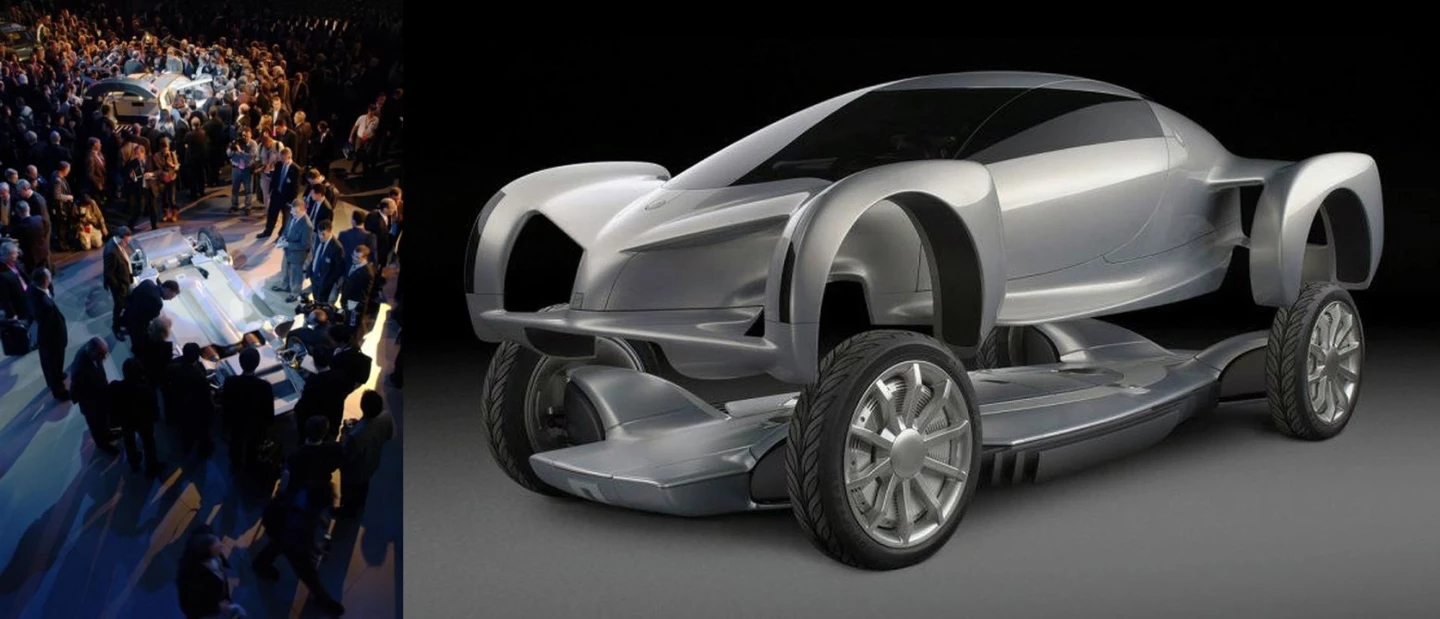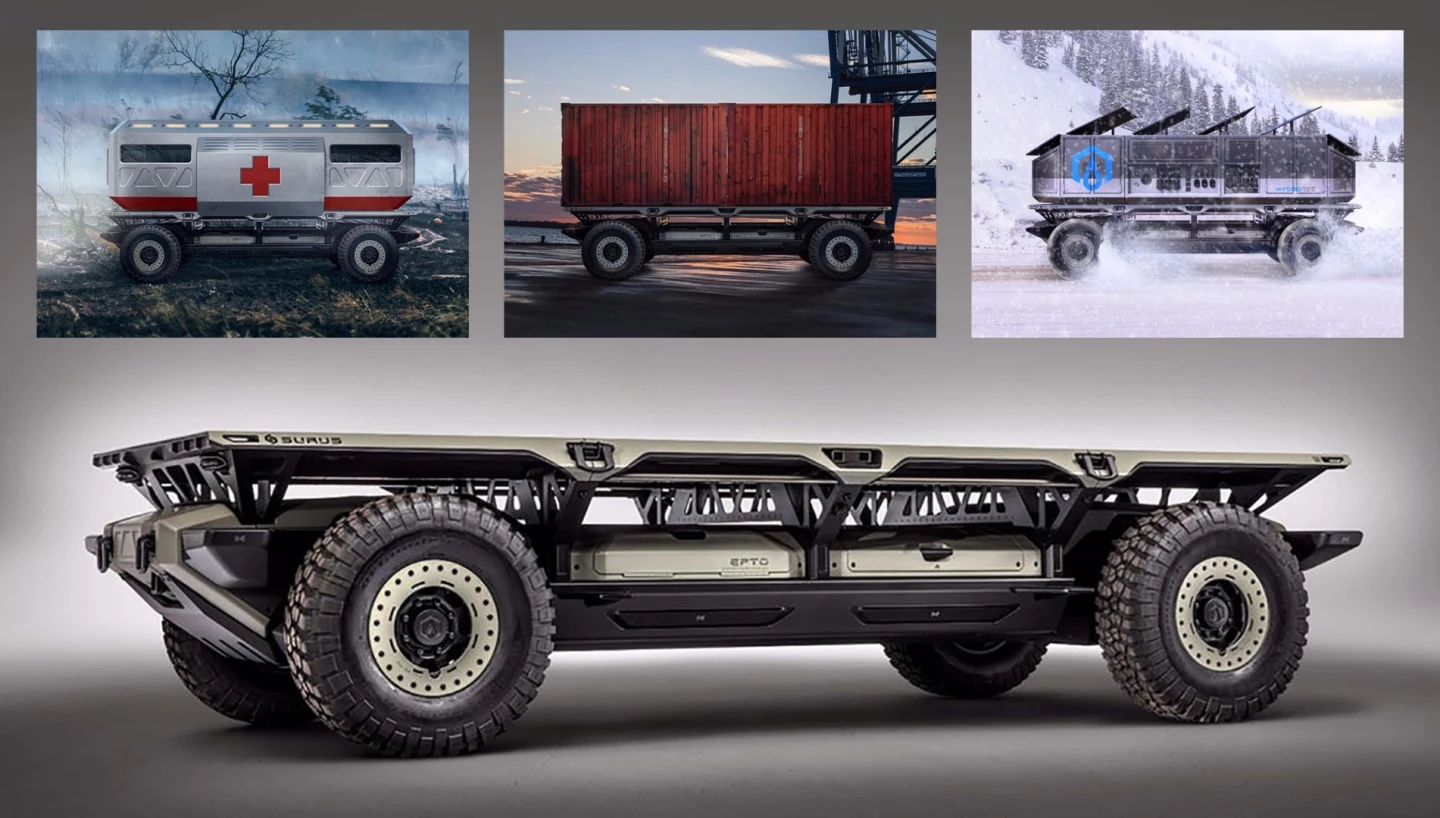Rinspeed concept cars are invariably one of the highlights of the major automotive shows each year with their often challenging ideas. So far we've seen just a brief teaser of the Snap concept before the full reveal at January's Consumer Electronics Show in Las Vegas, but it doesn't appear all that much different to numerous concept cars over the last 15 years, most notably from General Motors.
Rinspeed's Snap concept is a play on the "snap" which occurs when the "skateboard," which contains all the technology and drivetrain, connects with the "pod," the body of the vehicle used by passengers.

In 2002, General Motors (GM) showed its AUTOnomy concept (above), in which a skateboard-like fuel-cell chassis could be fitted with an array of bodies, ironically separating the chassis from the body once more, just as automobiles had traditionally been manufactured prior to WW2.
"If our vision of the future is correct, and we think it is, AUTOnomy could reinvent the automobile and our entire industry," said Larry Burns, GM Vice President of Research and Development and Planning, at the time.
"It will take a little getting used to, but it's maximum freedom, maximum space for people and their stuff," said Burns. "There wouldn't be foot pedals or a steering column. The body shape could be anything you want it to be. Customers could have multiple bodies and swap them depending on their needs. We've chosen this futuristic two-seater, but next, we might do a mobility body that allows a wheelchair user to roll into the driving position, or a 10-seat transit bus. We've even talked about a seating position that puts the driver up front, like a helicopter pilot."

That was in 2002, and in 2004 GM used the same automotive architecture in the Hy-wire (above) and then in 2006, the same skateboard concept was used in the Sequel.

On October 10, 2017, General Motors proposed the same fundamental idea in the Silent Utility Rover Universal Superstructure (SURUS) which uses replaceable bodies on a fuel cell skateboard. The only major difference between the 2017 SURUS and the 2002 AUTOnomy and 2004 Hy-wire is that DARPA had not catalyzed the creation of autonomous vehicles by running the DARPA Grand Challenge. In the decade since the DARPA Urban Challenge of 2007 (it seems like a lifetime ago), autonomous capabilities have entirely changed the landscape. Naturally enough, the SURUS skateboard can drive itself.

Rinspeed's concept pictured above is hence not just not new, it is 15 years old, which might as well be ancient history given the rate at which technology is progressing in 2017.
The full text of the press release for the Snap system follows:
Self-driving electric cars full of IT components are supposed to relieve the burden on congested streets and polluted cities. With the "Snap" concept vehicle, Swiss think tank Rinspeed shows off a comprehensive approach for how this could work: For the first time, the vehicles also offer meaningful immobile use, because the chassis and the body structures go their separate ways.
As a result, unused sheet metal or "rolling stock" are things of the past. Mobility visionary Frank M. Rinderknecht simply relegates all components susceptible to wear and aging as well as all technology relevant to data processing to the so-called "skateboard," the consequently "intelligent" and fully automated chassis of the electric vehicle. The body structures go by the umbrella term "pod" and consist of long-lived modules. They are virtually free from mechanical wear and only contain long-lasting IT components that are not bound to be outdated quickly. "Up top" it is all about the particular purpose of use - from a versatile delivery pod to a breathtaking, fully connected user experience for the occupants of a passenger pod.
With it, the clever Swiss solve a problem that many of us know from the navigation system in our own car: The thing no longer finds the way, because the software and map data are outdated. What is only irritating in this context, can quickly become a matter of safety in the near future in self-driving cars. Because after just a few short years, most conventional IT components can no longer be updated owing to the fact that the rapid software development has simply rendered the hardware obsolete. The rest of the vehicle may stay on the roads for the entire service life of a car - that is to say, 18 years and more.
The ingenious idea behind it: While the classic automakers celebrate the moment when the body and the chassis come together ("marriage") as a highlight of every plant tour, "skateboards" and "pods" of the "Snap" are only temporary companions, which in turn however are together day and night. Versatile pods - such as for passenger transport, delivery or parcel services or the weekend adventure trip with the entire family - use whatever chassis happens to be available at the time. The pods can also be put to stationary use - for example, as a temporary office in the heart of the city. And the skateboards? After a few short but intense years, they are completely recycled, because they have reached the end of their useful life. As a result, they elegantly elude an expensive and complicated hardware upgrade.
"Snap" - rarely before did the name of a vehicle better describe a solution for the problems of the entire industry. It would be nice if the concept car from the Swiss made it go "click" for the mobility industry.
ENDSSource: Rinspeed








